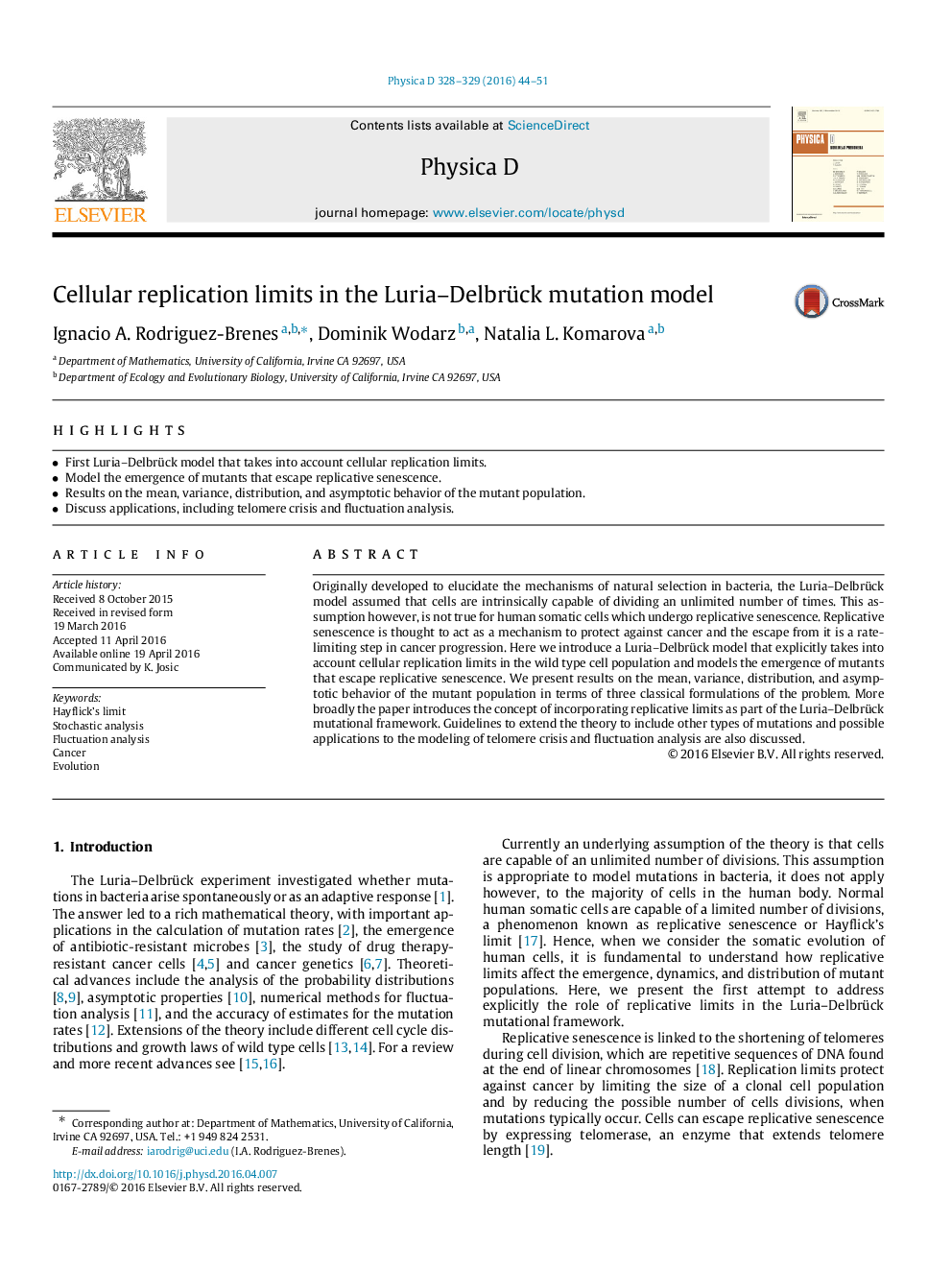| Article ID | Journal | Published Year | Pages | File Type |
|---|---|---|---|---|
| 1895280 | Physica D: Nonlinear Phenomena | 2016 | 8 Pages |
•First Luria–Delbrück model that takes into account cellular replication limits.•Model the emergence of mutants that escape replicative senescence.•Results on the mean, variance, distribution, and asymptotic behavior of the mutant population.•Discuss applications, including telomere crisis and fluctuation analysis.
Originally developed to elucidate the mechanisms of natural selection in bacteria, the Luria–Delbrück model assumed that cells are intrinsically capable of dividing an unlimited number of times. This assumption however, is not true for human somatic cells which undergo replicative senescence. Replicative senescence is thought to act as a mechanism to protect against cancer and the escape from it is a rate-limiting step in cancer progression. Here we introduce a Luria–Delbrück model that explicitly takes into account cellular replication limits in the wild type cell population and models the emergence of mutants that escape replicative senescence. We present results on the mean, variance, distribution, and asymptotic behavior of the mutant population in terms of three classical formulations of the problem. More broadly the paper introduces the concept of incorporating replicative limits as part of the Luria–Delbrück mutational framework. Guidelines to extend the theory to include other types of mutations and possible applications to the modeling of telomere crisis and fluctuation analysis are also discussed.
